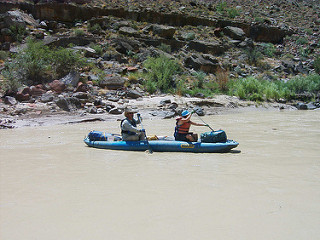
The Utah Division of Water Quality (DWQ) contracted with Tetra Tech to conduct ecological risk assessments in the San Juan River and Lake Powell to determine impacts from the Gold King Mine spill. The assessments were completed in 2018 and serve as a screening exercise to conservatively estimate potential risks to both humans and ecology from exposure to water and sediment from the San Juan River. This work is important for understanding potential current risks to human and ecological health and drive future data-collection efforts to fill gaps.
The report, also known as a screening level risk assessment (SLRA) is divided into two sections:
- Human health screening level risk assessment of direct exposure to surface water and sediment by humans
- Agricultural screening level risk assessment of risks to animals, crops, and people ingesting livestock or crops irrigated with water from the San Juan River
The overall objective of the SLRA is to identify and characterize current and potential threats to human and agriculture from contaminants in surface water and sediment. The SLRA:
- Documents whether actual or potential risks exist.
- Identifies which contaminants pose a risk.
- Generates results that help determine the need for further evaluation, monitoring, or remediation.
The SLRA characterizes potential exposure pathways; identifies the appropriate exposure concentration for each contaminant of potential concern (COPC) in surface water, sediment, soil, and biota; and assesses potential risk from the COPCs to humans and agriculture.
